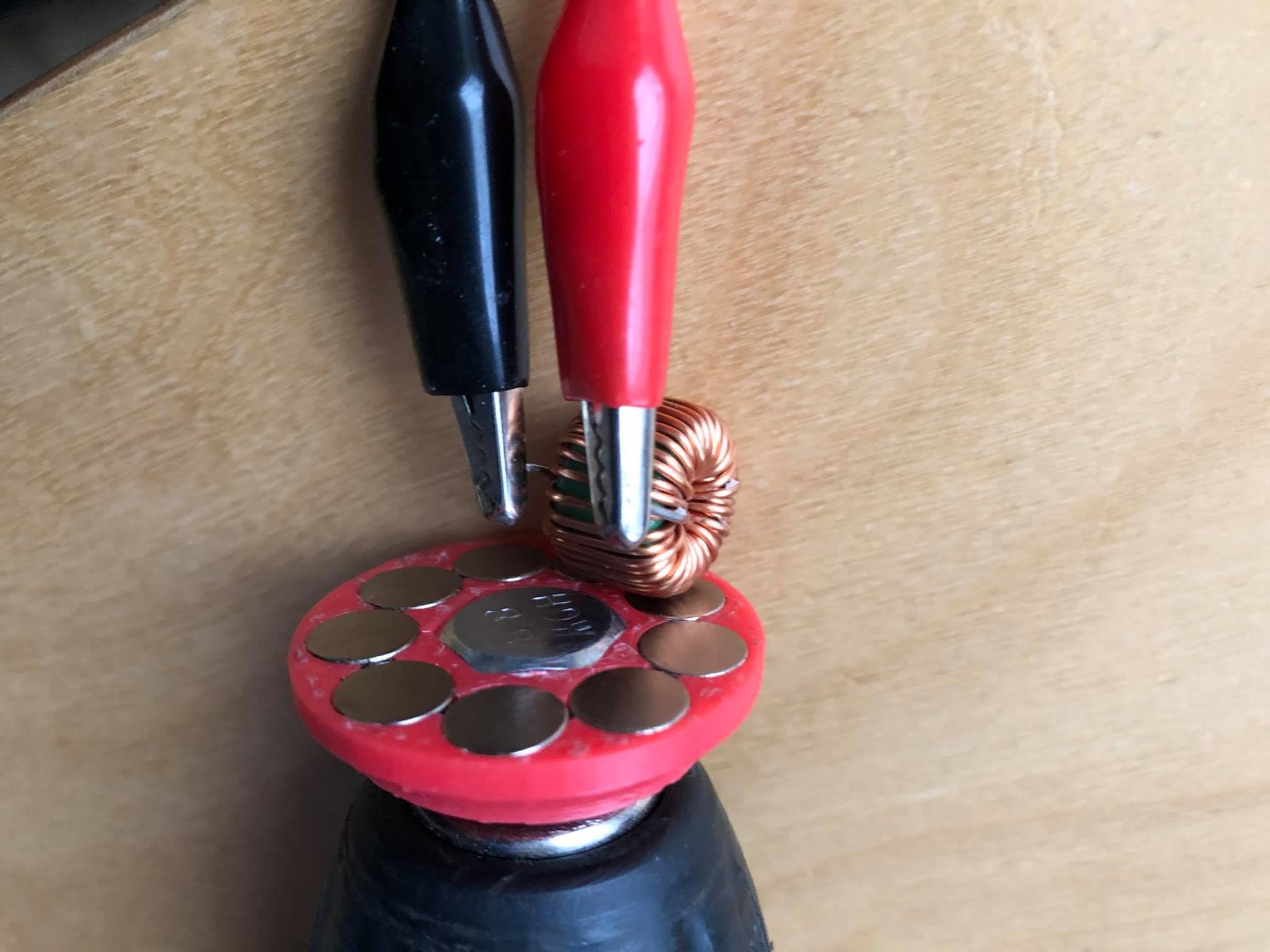I am trying to create something like gyroball. Which features LED lights, so the faster the spinning, the more light LEDs emit. This seems like a simple scenario of a coil generator.
As an experiment, I 3D printed a wheel, which can hold feromagnets I bought. I don't know their exact specs, but they seem quite powerfull. The wheel was fastened to my cordless drill and magnets were inserted in alternating polarities (and since I miscalculated during modeling the print, there are 9 compartments so the last two has same polarity).

Then I salvaged the coil from old PSU (I dont know the exact specs), connected multimeter to its leads and spinned magnets near the coil.
I tried spinning magnets from the side, with and without touching the coil. I measured the continuity of the coil's leads (beeped). But the multimeter stayed at 0.00 no matter what (I tried almost all settings of the multimeter DC and AC).
After some research and finding this and this questions, I've added a resistor as a load.
But that didn't make any change. I took apart the gyroball I have, to see there are two coils as well.
Spinning the printed wheel close to them did not light them up.
- What could be the cause?
- Are the two magnets of the same pols somehow messing with the whole thing?
- Is my salvaged coil a bad type (wire too thick)?
- Does my resistor have too much resistance to properly work (I tried more types than this one)?
EDIT:
Thanks for your answers!
I tried self made coil from old solenoid and paper tube, the ends are scraped and whole small circuit has continuity, but still no luck.





